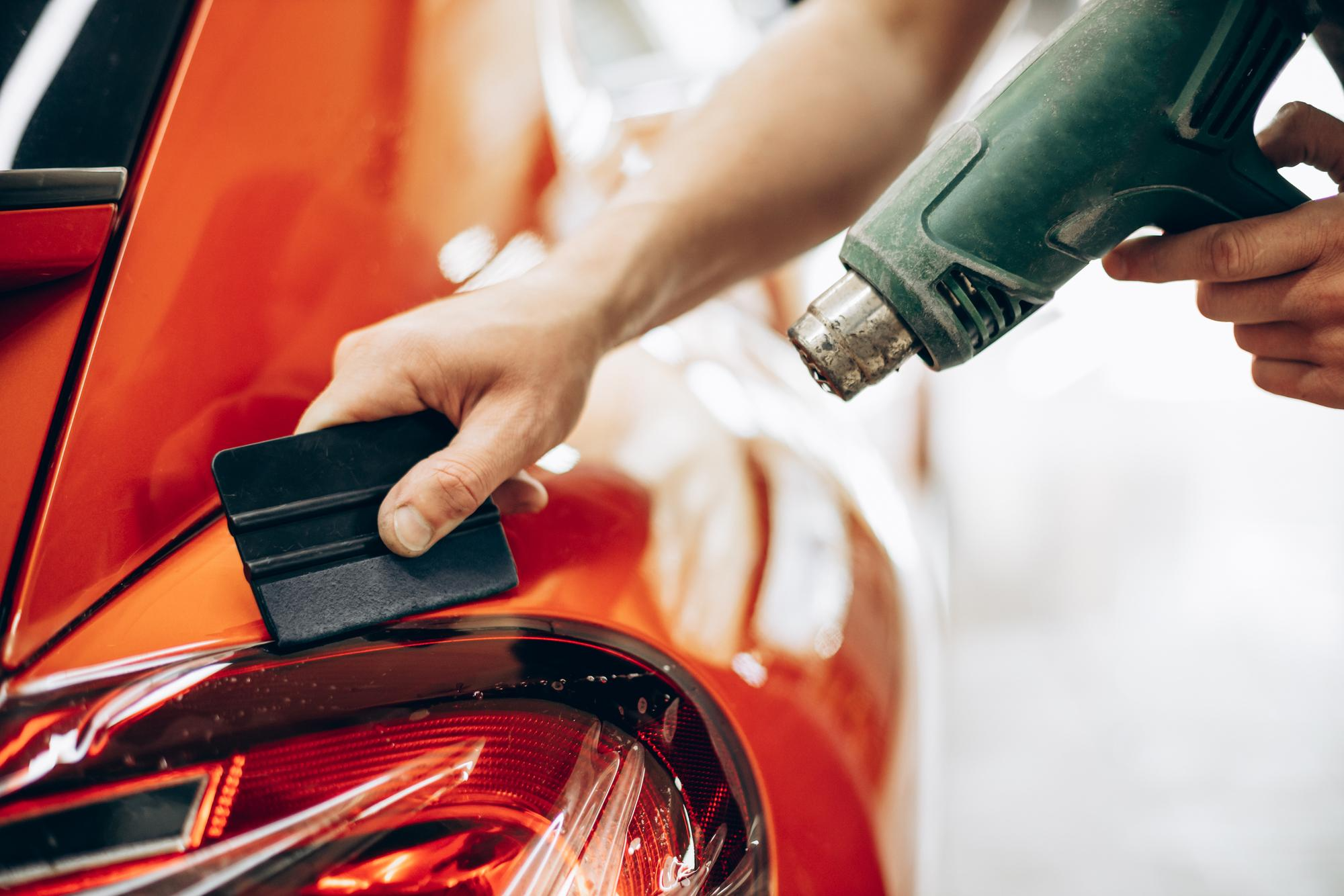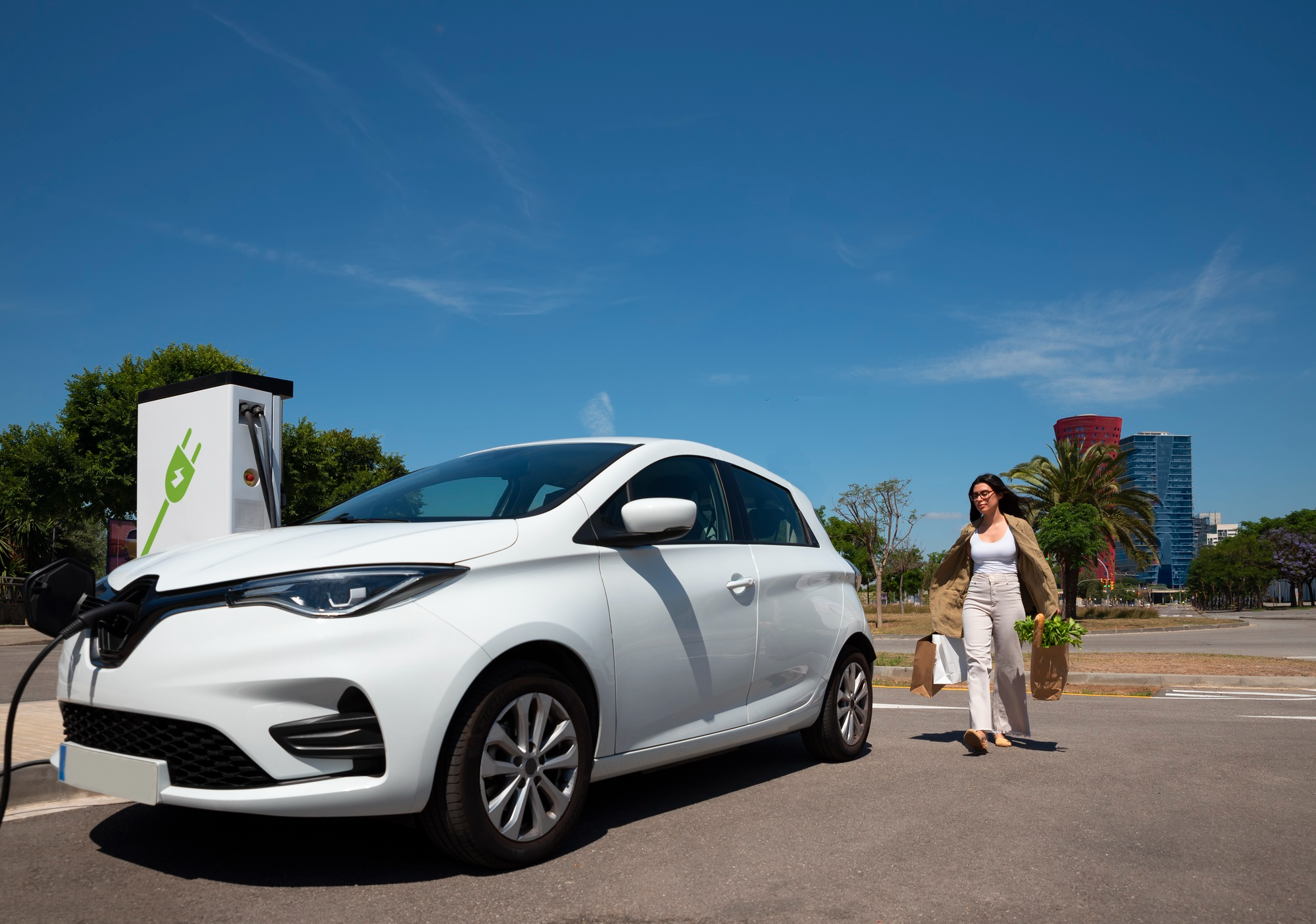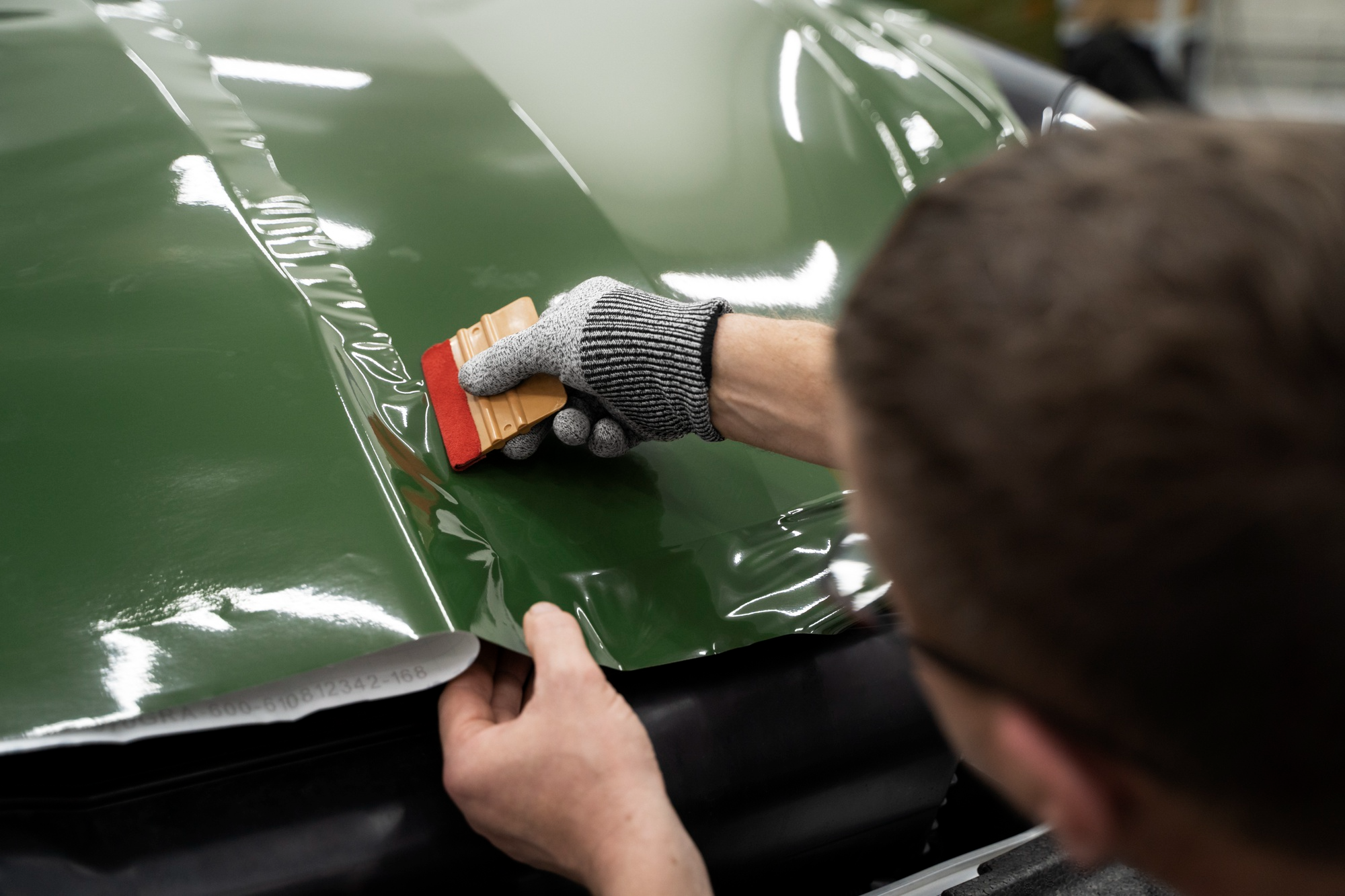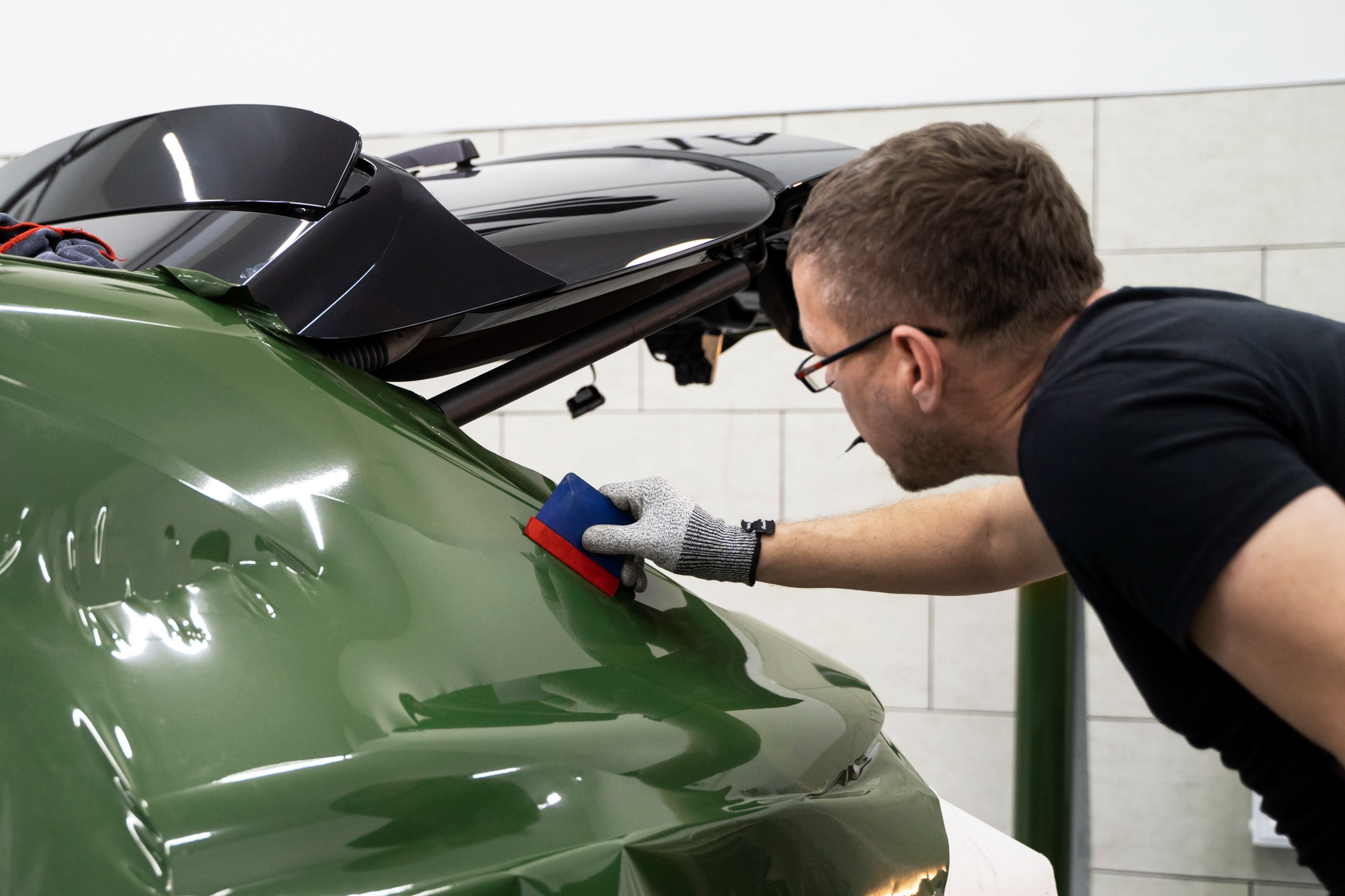The day you buy your car, it starts losing value.
That’s a hard truth every car owner knows. From the moment you drive off the lot, depreciation kicks in, but here’s the thing: how well your car looks is one of the biggest factors in how much money you’ll get back when you sell it.
Scratches. Rock chips. Faded paint. Those flaws can easily slash hundreds, or even thousands, off your resale value.
That’s where paint protection film (PPF) comes in. More than just a cosmetic upgrade, PPF is one of the smartest financial decisions you can make for your car. At Luxury Glass Tinting, we see it every day. Owners who protect their vehicles early not only enjoy a flawless finish while they drive but also walk away with stronger offers when it’s time to sell or trade in.
Let’s break down why car paint protection is less about vanity and more about real, measurable value.
Why Your Car’s Paint Matters So Much for Resale
When buyers look at a used car, the first thing they notice isn’t the odometer or the service record. It’s the paint.
A scratched, chipped, or faded exterior signals neglect, even if you’ve taken excellent care of the engine. In today’s market, people shopping for used cars want them to look new. That curb appeal can make or break your resale price.
In fact, according to Kelley Blue Book data, a car in “excellent” cosmetic condition can be worth 10–15% more than the same car in “fair” condition. That difference can easily reach thousands of dollars.
PPF works like insurance for your car’s finish, preserving that “like-new” look far longer than wax or ceramic coatings ever could.
What Is Paint Protection Film?
Think of paint protection film as a transparent shield. It’s a nearly invisible polyurethane layer applied to your vehicle’s painted surfaces.
This film protects your car against:
- Rock chips from highway driving
- Scratches from keys, shopping carts, or careless doors
- Bug splatter and bird droppings
- Road salt, debris, and harsh weather
- UV rays that cause paint fading
High-quality PPF also has self-healing properties. Small scratches and swirls literally disappear with heat, keeping the surface smooth and glossy without extra polishing.
Why It’s More Than a Cosmetic Upgrade
Here’s the truth: most people think of PPF as a vanity purchase, something car enthusiasts buy to keep their rides “showroom perfect.” However, when you run the numbers, car paint protection is a money-saving decision.
1. Fewer Paint Repairs
Rock chips, scratches, and road debris are inevitable. Repainting a single panel can cost $500–$1,500, and color-matching is never perfect. With paint protection film in place, you avoid those costs entirely and keep the original factory finish intact. Over the life of your car, that could mean thousands saved.
2. Preserved Resale Value
When it comes time to sell, buyers judge with their eyes first. A car that looks beat-up commands less attention and a lower price. A car with flawless paint stands out in the used market, often attracting multiple offers. With PPF, your car looks years newer, giving you confidence and negotiating leverage.
3. Less Depreciation Shock
Every car loses value over time, but nothing tanks resale value faster than visible wear. A faded or chipped finish immediately shaves off buyer interest. Paint protection film slows that decline by keeping the exterior fresh and consistent. Instead of your car’s appearance dragging down its worth, the finish holds steady, protecting thousands in resale value.
4. Long-Term Durability
Wax wears off within months. Ceramic coatings add gloss but usually last only 2–5 years before reapplication is needed. Professionally installed paint protection film lasts up to 10 years and shields against everyday wear and tear that other products can’t handle. That means you make the investment once, and it pays you back year after year.
5. Peace of Mind While Driving
Beyond the dollars, there’s a hidden value: less stress. Every time you hear a rock ping off your hood or see bug splatter on your bumper, you don’t have to worry about permanent damage. You drive knowing your car’s finish is protected. That kind of confidence is worth more than most people realize.
And unlike wax or ceramic, which wear off within months or a few years, paint protection film lasts up to 10 years with professional installation.
Tesla Paint Protection Film: A Perfect Example
Tesla owners are some of the most loyal PPF customers we see. Why? Because Tesla paint is notoriously thin and prone to chips. Even a few months of highway driving can leave the front bumper and hood peppered with damage.
Applying Tesla paint protection film early prevents this problem altogether.
Think about it: Teslas already command strong resale value, but two identical cars, one with chips all over the hood and one with flawless paint, will never sell for the same price. The protected car consistently pulls in higher offers.
That’s why Tesla forums are filled with owners recommending PPF as the first upgrade after delivery. It’s not about showing off; it’s about protecting an investment that can return thousands down the road.
Comparing Paint Protection Film with Other Options
Here’s a quick breakdown of how PPF stacks up against common alternatives:
| Protection Method | Average Lifespan | Protection Level | Cost Range | Resale Value Impact |
| Wax/Sealant | 3–6 months | Low (UV, light water) | $100–$200 | Minimal |
| Ceramic Coating | 2–5 years | Medium (UV, water, light scratches) | $800–$1,500 | Moderate |
| Paint Protection Film | 7–10 years | High (chips, scratches, UV, debris) | $1,500–$6,000 | Strong |
Ceramic coatings are great for gloss and easy cleaning, but they can’t stop a rock chip. Wax is cheap, but needs constant reapplication. PPF is the only option that actually preserves your paint against real-world damage.
The Psychology of Resale
It’s not just about technical protection; it’s about perception.
A potential buyer walks around your car. They see no rock chips, no swirls, no scratches. Instantly, they think: “This car has been cared for.”
That first impression matters more than most sellers realize. In the used car market, visual condition sets the tone for the entire negotiation.
- Trust factor:A flawless exterior suggests the owner has taken care of the vehicle as a whole. Even if they can’t see under the hood, they assume the same level of care went into oil changes, maintenance, and driving habits. This trust can mean a faster sale and fewer lowball offers.
- Emotional appeal:Buyers don’t just purchase cars with logic; they buy with emotion. A car that looks like new triggers excitement, confidence, and desire. In contrast, chips, scratches, and fading paint create hesitation and doubts. PPF keeps your vehicle in the first category, the one buyers can imagine themselves proud to own.
- Perceived value vs. real value:Even if your car has higher mileage, a perfect paint job can close the psychological gap between it and a newer model. Buyers will often pay more, or at least stay firm on your asking price, because the car feels newer than it is.
- Negotiation power:When a car shows visible wear, buyers use every flaw as leverage to drive the price down. With paint protection film preserving the exterior, you remove that bargaining chip, giving you the upper hand in negotiations.
In short, PPF doesn’t just guard paint; it shapes buyer perception. Plus, in resale, perception is often the deciding factor between getting your asking price or leaving money on the table.
| Quick Benefits of Paint Protection Film
Here’s how paint protection film protects your car’s exterior:
ü Shields against chips, scratches, and stains ü Keeps paint glossy and new for years ü Boosts resale value by thousands ü Works with all paint colors and finishes ü Especially important for Tesla paint |
When Is the Best Time to Install PPF?
The simple answer: the earlier, the better. Installing paint protection film when your car is brand-new ensures that the paint underneath remains untouched from day one. Every mile you drive exposes your car to gravel, road debris, bird droppings, and UV rays, so the sooner you apply PPF, the longer your factory finish is preserved in its original condition.
That said, it’s never too late to protect your investment. If your vehicle already has chips, scratches, or swirl marks, those flaws can often be corrected with paint correction services before the film is applied. This process “resets” the surface, and the PPF then locks in that restored look for years to come.
A few useful insights to consider:
- For new cars:Installing PPF immediately keeps the paint as fresh as the day it left the dealership. Think of it as an invisible insurance policy against the inevitable wear of daily driving.
- For used cars:Even if your car isn’t brand-new, PPF adds value by preserving its current condition and preventing further damage. This is especially important if you plan to resell or trade it in.
- For high-end or specialty vehicles:Exotic, luxury, and collectible cars benefit greatly from PPF because paint repairs on these vehicles can be costly, time-consuming, and sometimes impossible to match perfectly.
- For long-term ownership:If you plan to keep your car for years, PPF is a smart investment that reduces maintenance costs, keeps the car looking newer for longer, and maintains stronger resale appeal.
In short, whether you’re driving home from the dealership or refreshing an older ride, PPF can be applied at any stage to protect, preserve, and maximize value.
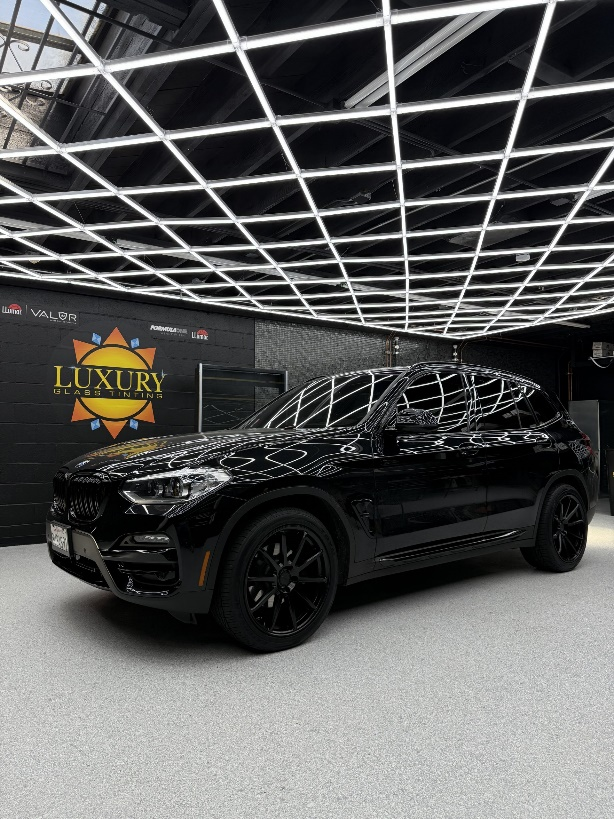
Where Should You Apply PPF?
You don’t always need to wrap the whole car. Common high-impact areas include:
- Front bumper
- Hood
- Fenders
- Side mirrors
- Door edges and handles
For luxury models and Teslas, many owners choose full-body wraps. It’s the ultimate shield against daily wear and tear.
Why Professional Installation Matters
Yes, you can buy DIY kits online, but here’s the problem: paint protection film requires precise installation.
Air bubbles, uneven cuts, or dust trapped underneath not only look bad but also compromise the film’s protective ability.
At Luxury Glass Tinting, we use manufacturer-approved techniques and tools in a clean, controlled environment. That’s how we ensure the film is seamless, invisible, and durable for up to a decade.
The Long-Term Payoff
Think about how long you plan to keep your car. Three years? Five years? More?
Now think about how it will look when you’re ready to move on. The choice is simple:
- A car that looks aged, with scratches and chips.
- Or a car that still shines, with factory paint preserved under a protective layer.
Every used car buyer prefers the second option, and that’s the car that brings you thousands more on resale.
Final Thoughts: A Smart Move for Any Car Owner
Paint protection film isn’t about showing off. It’s about protecting your investment. Cars are one of the biggest purchases most people make, and protecting the paint is one of the easiest ways to hold onto more of that value.
Whether you drive a Tesla, a luxury SUV, or your daily commuter, the principle is the same: keep the paint pristine, and you’ll always have the upper hand when it’s time to sell.
Ready to Protect Your Investment? Keep Your Car Looking New and Worth More
At Luxury Glass Tinting, we’ve helped countless drivers maximize their resale value with car paint protection. We specialize in seamless, long-lasting installations, from partial front coverage to full Tesla paint protection film wraps.
If you’re serious about keeping your car’s value strong, we’re here to help. Let us protect your investment today so you can enjoy every drive tomorrow, and cash in big when you’re ready to sell.
Call us now to book your paint protection film appointment. Your car’s future value starts with the protection you give it today.

